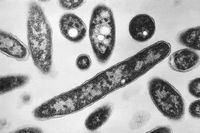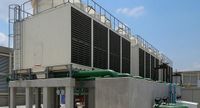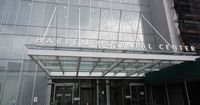Six people have now died and more than 100 have fallen ill in the wake of a Legionnaires’ disease outbreak that has shaken Central Harlem, New York City, since late July. As of August 21, 2025, the city’s Department of Health and Mental Hygiene confirmed 111 cases and seven hospitalizations, with the majority of infections clustered in ZIP codes 10027, 10030, 10035, 10037, and 10039, according to multiple reports from the Associated Press, Gothamist, and New York Daily News.
The outbreak, first identified on July 25, has been traced to 12 cooling towers on 10 buildings, including several city-owned facilities such as Harlem Hospital Center and a sexual health clinic. Health officials moved quickly to remediate these towers, completing treatment by August 21. Despite these efforts, the toll has continued to rise, with the most recent death discovered outside of New York City but linked to the ongoing investigation, as reported by the Associated Press.
Legionnaires’ disease is a severe form of pneumonia caused by Legionella bacteria, which thrive in warm water and can spread through building water systems—especially cooling towers that use water and fans to regulate building temperatures. Inhaling water vapor contaminated with the bacteria can lead to infection, but the disease is not spread from person to person. Symptoms typically appear between two days to two weeks after exposure and can include cough, fever, chills, muscle aches, shortness of breath, headaches, fatigue, loss of appetite, confusion, or diarrhea, according to guidance from the U.S. Centers for Disease Control and Prevention (CDC).
City health officials have emphasized that the risk to most residents remains low, but they urge anyone living or working in the affected ZIP codes who develops flu-like symptoms to seek medical attention promptly. The city has also reassured the public that the outbreak is limited to airborne water vapor from the cooling towers, not the buildings’ hot or cold water supply, which remains safe for drinking, bathing, and cooking.
While remediation of the contaminated towers was swift, the outbreak has raised serious questions about the city’s inspection regime and staffing. According to Gothamist, New York City’s health department lost more than a third of its cooling tower inspectors over the three years leading up to the outbreak, despite a 30% increase in funding for the inspection unit. As of August 21, the department had 24 water ecologists—13 fewer than in 2022—and currently has 12 job openings for these vital roles. The health department attributes the shortfall to recruitment difficulties, noting that inspectors require advanced degrees or relevant experience, must be able to work in challenging physical conditions, and need specialized training and certifications.
Staffing shortages have had tangible effects: seven of the 10 buildings at the heart of the outbreak had not been inspected in the year prior, and citywide, cooling tower inspections have declined since 2017. Although there was a rebound in 2022 after a pandemic-related dip, inspections were on pace to reach historic lows before the current outbreak. The health department aims to inspect all cooling towers annually, but this goal has clearly not been met. Despite these lapses, health department spokesperson Chantal Gomez insisted, “It would be wrong to say this unfortunate circumstance could have been prevented through more staff and inspections. There is always a possibility that the bacteria may grow rapidly, especially in warm weather.”
Mayor Eric Adams, addressing the crisis at a press conference on August 19, stated, “There are clear procedures on inspection. … As soon as you identify Legionnaires’ is there, you’re supposed to go in and make sure that you remediate the problem. That’s what we’re doing within 24 hours.” He further announced that the Department of Health and Mental Hygiene would evaluate whether more frequent inspections could help prevent future outbreaks.
Yet, as the city grapples with the aftermath, legal action is already underway. On August 20, two construction workers from Nassau County, Duane Headley and Nunzio Quinto, filed lawsuits against Rising Sun Construction LLC and Skanska USA Building, Inc., alleging negligence in maintaining and testing cooling towers for bacteria at or near Harlem Hospital Center. Their attorney, Ben Crump, called the outbreak “completely preventable” and criticized what he described as cost-cutting measures by corporations that led to unnecessary tragedy. “It was completely preventable. And so when corporations cut corners, tragedies like this happen, preventable tragedies, unnecessary tragedies, people being hospitalized for days and weeks, having issues that cause them permanent damage,” Crump said at a press conference covered by The Independent.
Skanska, one of the companies named in the lawsuits, responded through a spokesperson: “We have fully cooperated with the New York City Department of Health and Mental Hygiene to facilitate the inspection and disinfection of the cooling tower at the building currently under construction at 40 West 137th Street. We will continue to implement all necessary mitigation and communication procedures to ensure the safety of our workers and the surrounding public.” Rising Sun Construction LLC did not provide immediate comment.
Attorneys for other affected residents are also preparing lawsuits, with Jory Lange representing at least 40 people who have fallen ill. “It’s disturbing to see these outbreaks happening again and again in New York City when we know it’s completely preventable,” Lange told Pix11.
Prior to the outbreak, New York City Health and Hospitals reportedly sent out a bulletin in early July warning construction companies about the risk of Legionella bacteria developing in cooling towers—a warning that, in hindsight, seems ominously prescient. Once cases began to appear in Central Harlem, city officials discovered that several cooling towers atop buildings had tested positive for the bacteria, and fans from these towers were spreading contaminated droplets into the air.
The city council is now expected to hold an oversight hearing next month to examine the outbreak and the city’s response. The investigation will likely focus on whether the inspection lapses, staffing shortages, and delayed enforcement contributed to the largest Legionnaires’ disease outbreak in New York City in a decade. Meanwhile, city health officials say they are continuing to monitor the treated towers and will alert building owners if further remediation is needed.
As Harlem residents and workers process the aftermath, the city faces a reckoning over whether this tragedy could have been avoided—and what must be done to ensure it does not happen again.


